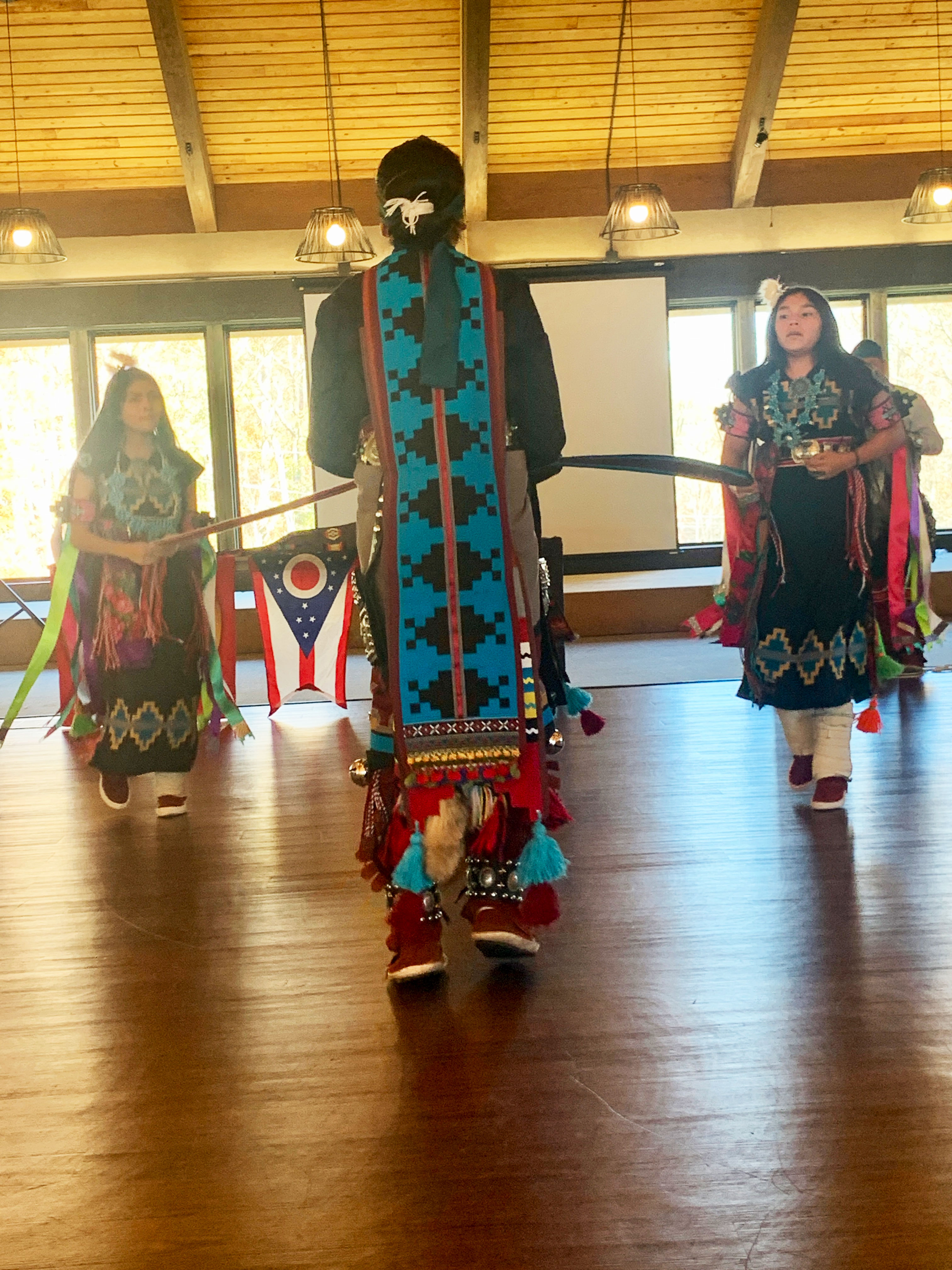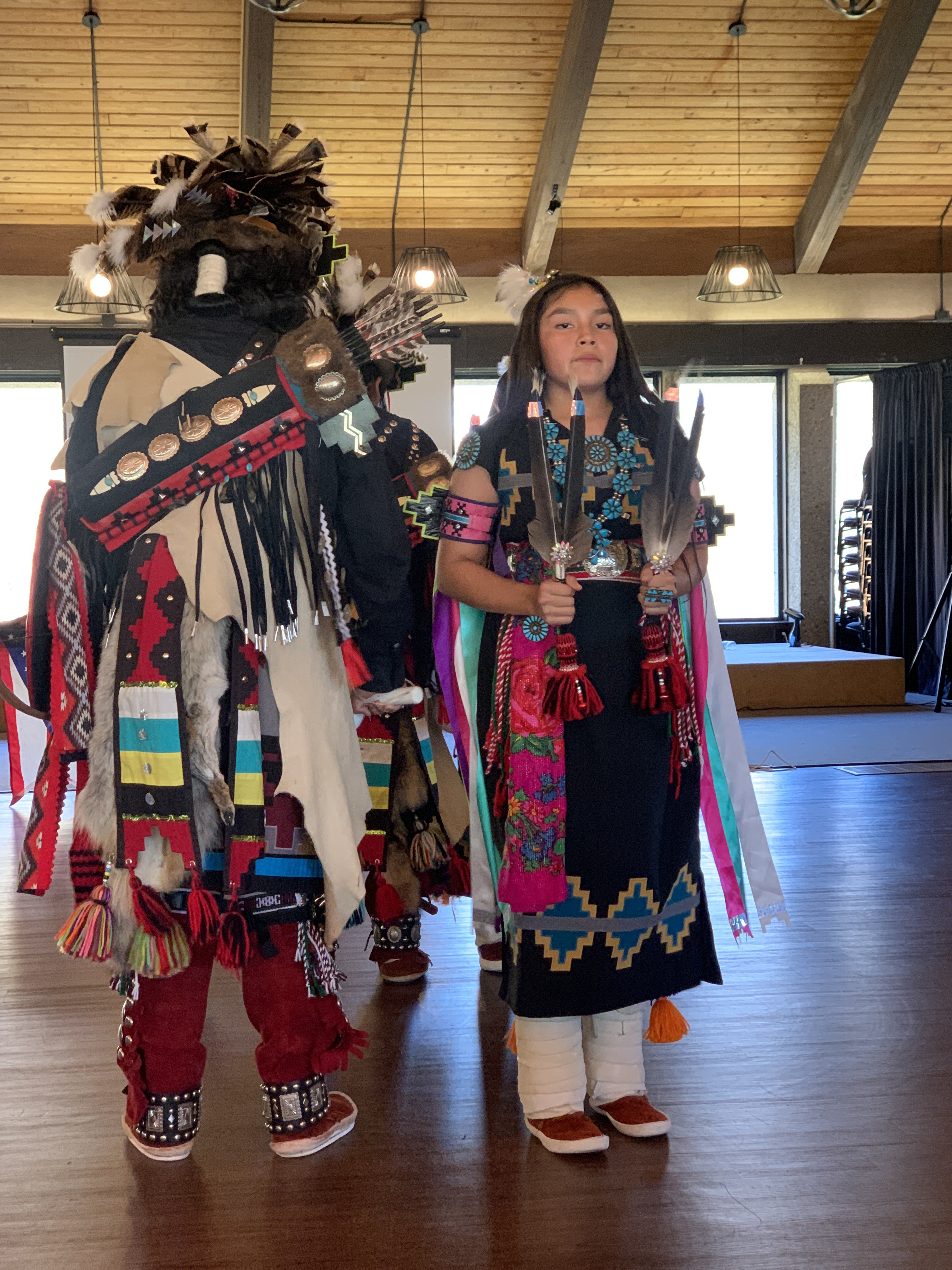
It was a mix of storytelling and cultural performance Friday when the Dineh Tah' Navajo Dance Troupe visited campus for a pair of events in celebration of Native American Heritage Month.
The visit began when the group’s director, Shawn Price, delivered a morning lecture in Peirce Lounge entitled, “William Tecumseh Sherman: War Maker, Peace Maker,” about the Civil War general from Ohio who also was part of the Indian Peace Commission formed in 1867.
Later, the traditional Navajo dancers from Albuquerque, New Mexico offered an afternoon performance of what they referred to as “blessings” — modified to respect the actual songs and dances used in sacred religious ceremonies — in Gund Commons Ballroom.
The events were sponsored by the Bicentennial Committee; the Office of the Provost; the Office of Diversity, Equity and Inclusion; and the departments of Dance, Drama and Film; Art History; Anthropology; Religious Studies; and History.
Maggie Potter ’26, who helped coordinate the events, said she learned a lot from the group. By sharing their history and culture — and often the history behind the history — the Dineh Tah’ dancers make a real difference, and organizers were pleased to be able to add Gambier as a stop on the group’s tour of Ohio, according to the biology major from Worthington, Ohio.
“Our goals with this were to create engagement and give Kenyon students learning opportunities and also to bring indigeneity into the consciousness of Kenyon,” Potter said. “It was intellectually and emotionally very filling and healing.”

The dance troupe has been performing for audiences since 1993 to promote a deeper understanding of the rich cultural heritage of the Navajo (Dineh) people, something that faculty said they do well using a number of different means.
Associate Professor of History Patrick Bottiger, a historian of Native America, said he’s spoken with Price a few times before and been transfixed by his storytelling abilities.
“To me, his ability to tell a story and to share the histories of the Navajo with us is what Native American Heritage Month is all about — that Native peoples are still here and they are still telling their stories,” he said.
Balinda Craig-Quijada, professor of dance and chair of the Department of Dance, Drama and Film — one of the cosponsors of the visit — said dance can be an important reflection of culture, history and belonging.
“While the ‘function’ of dances change throughout history, dance remains a powerful way to express identity while honoring and recognizing the indigenous influences in American culture,” she said.
Native American Heritage Month dates back to 1990, when President George H.W. Bush approved a joint resolution designating November of that year as “National American Indian Heritage Month.” Similar proclamations have been issued each year since 1994.
But efforts to recognize the contributions made by Native Americans to the establishment and growth of the United States go back to the turn of the 20th century. The first state to declare an American Indian Day was New York in 1916.
Potter, who is not indigenous, said indigenous presence and history often feel invisible in Ohio, where there currently are no federally recognized tribes, and events like these are important to overcome that.
“I learned so much, and I hope that others learned a lot, too,” she said.